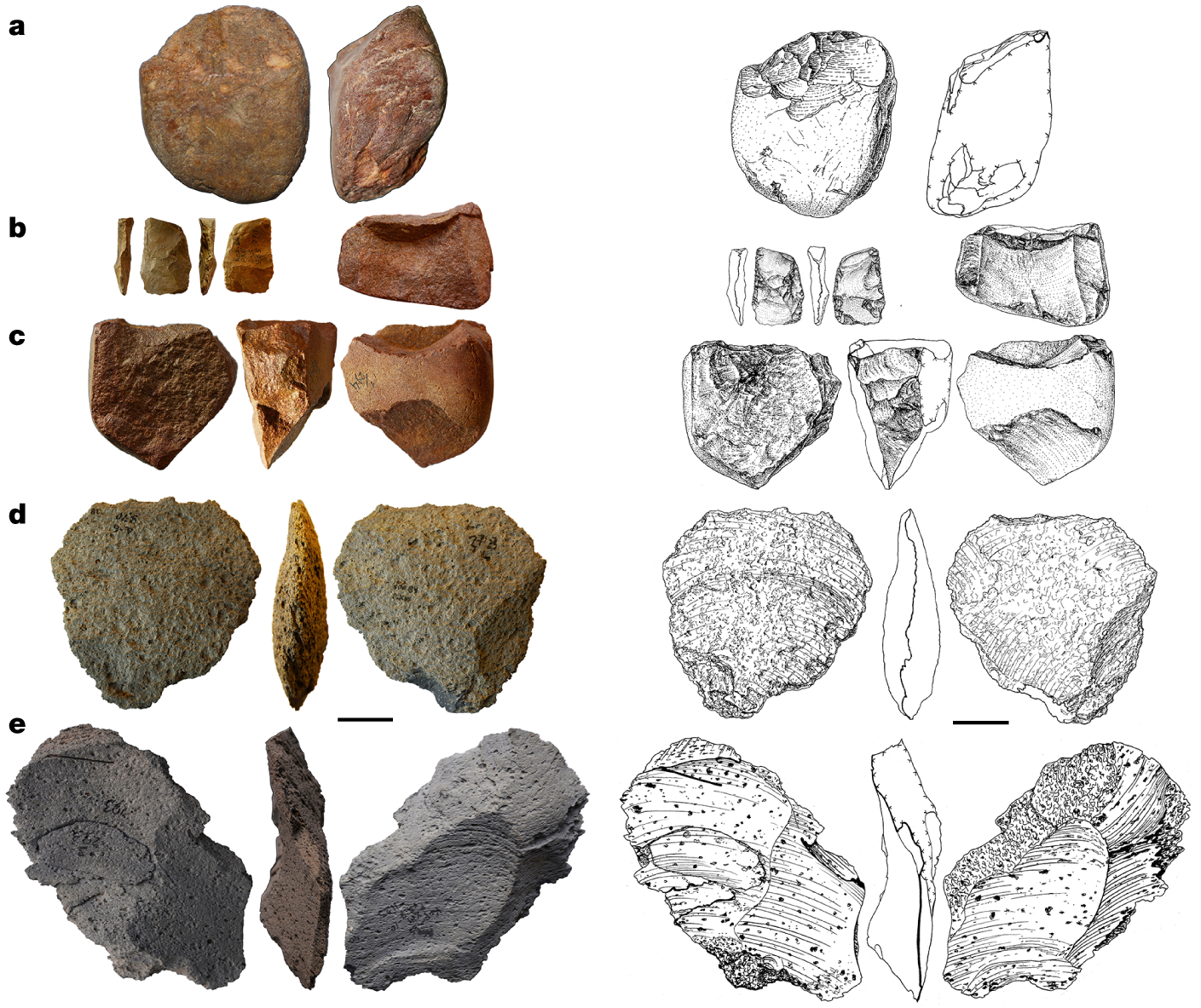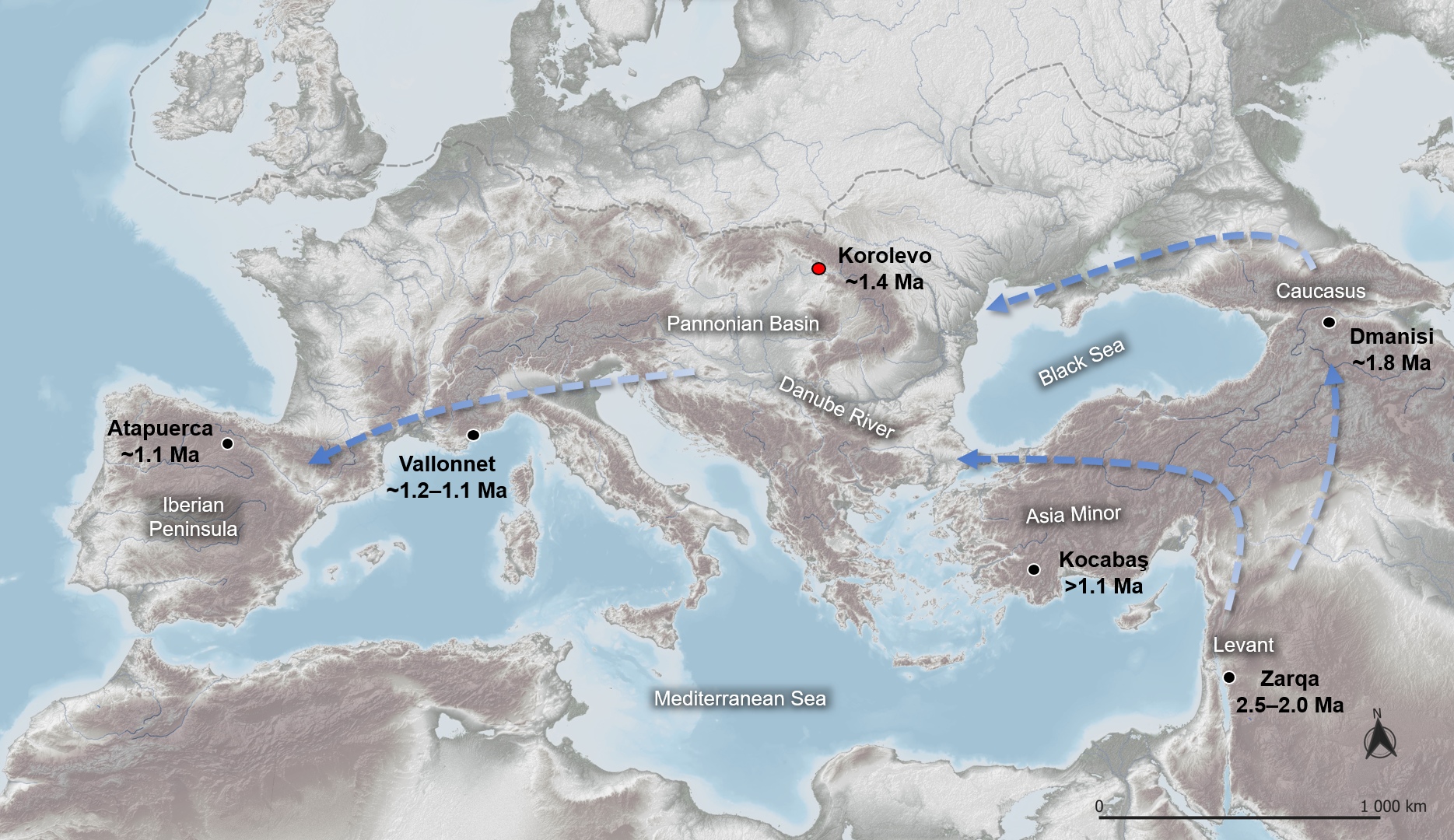Primitive stone tools found in Ukraine have been dated to 1.4 million years ago, making them the oldest known human-made artifacts in Europe. Prior to this discovery, the continent’s earliest prehistoric utensils were thought to reside in Spain and France, yet the newly-dated tools from the east radically alter the story of when and how humans first migrated into the region.
Originally discovered in 1974 at a site in Ukraine called Korolevo, the sculpted stone items are typical of the so-called Oldowan toolkit, which first appeared in East Africa some 2.5 million years ago and represents the most primitive style of human tool-making. For half a century, scientists were unable to accurately date the ancient artifacts, yet a modern method involving cosmogenic nuclides has finally revealed their staggering age.
Cosmogenic nuclides are rare isotopes that form when cosmic rays from distant supernovae collide with elements within the Earth’s crust. By analyzing the ratios of nuclides such as beryllium-10 and aluminum-26, the authors of a new study were able to reliably estimate how long ago the Korolevo tools were buried, ultimately determining that they are around 1.42 million years old.
“Korolevo is now established as the earliest securely dated hominin presence in Europe,” write the researchers.

The knapped artifacts are typical of the Oldowan toolkit.
Image credit: Garba et al., Nature 2024
Unfortunately, no actual human remains were discovered alongside the stone tools, so it’s impossible to say for certain which ancient hominid species crafted them. However, given that Homo erectus is the only lineage known to have existed outside of Africa 1.4 million years ago, researchers suspect that this extinct species is probably responsible.
“Our earliest ancestor, H. erectus, was the first of the hominins to leave Africa about two million years ago and head for the Middle East, East Asia, and Europe,” explained study author Roman Garba in a statement. Tracing the path taken by these intrepid prehistoric hominids, scientists have previously discovered 1.8-million-year-old Oldowan tools at a site called Dmanisi in Georgia, as well as other ancient assemblages in China and Indonesia.
In Europe, however, there is a significant gap between the Dmanisi relics and the next oldest tools, which come from Atapuerca in Spain and Vallonnet in France, and are around 1.1 to 1.2 million years old. This delay has inspired the hypothesis that humans originally colonized Europe from the southwest before later spreading northwards and eastwards.
However, Garba has said that “The radiometric dating of the first human presence at the Korolevo site not only fills in a large spatial gap between the Dmanisi site in Georgia and Atapuerca in Spain, but also confirms the hypothesis that the first pulse of hominin dispersal into Europe came from the east or southeast.”

The findings suggest humans first colonized Europe from the East.
Image credit: Garba et al., Nature 2024
Korolevo also represents the northernmost appearance of Homo erectus, with the date of the tools coinciding with a warm interglacial period that may have facilitated the migration of this species into higher latitudes. According to the study authors, these primordial humans probably began their colonization of Europe from this point, moving southwards and westwards along the valleys of the Danube River.
“Our findings at Korolevo provide the first primary evidence advancing the hypothesis that Europe was colonized from the east,” they write. “A plausible dispersal scenario is that the Korolevo hominins stem from the Levant via Asia Minor, the Danube corridor and the Pannonian Basin.”
Noting that the picture they paint here may be a little over-simplistic, the researchers say they “recognize that hominin dispersal surely did not unfold as a unidirectional march from A to B… But for now, we can say that Korolevo’s occupation at around 1.4 [million years ago] directly challenges the proposal that people moved to higher latitudes only after the widespread colonization of southern Europe by around 1.2 [million years ago].”
The study has been published in the journal Nature.
Source Link: Oldest Stone Tools In Europe Place Prehistoric Humans There 1.4 Million Years Ago